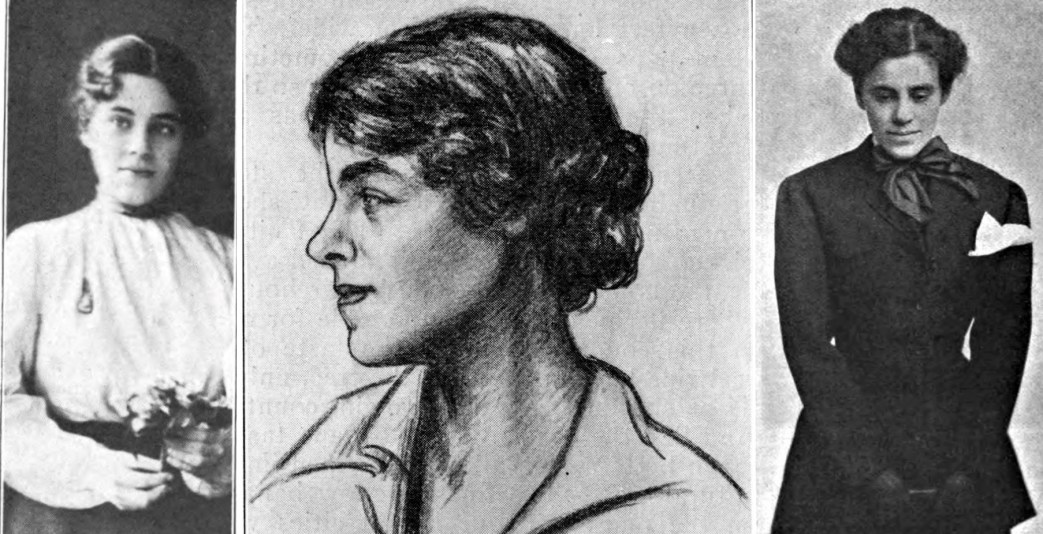Who Was Mary E. Marcy?
Meet Mary E. Marcy (1877-1922), far and away the person most responsible for bringing the economic ideas of Marx and Marxism to U.S. workers. It is important to underline the historic fact that that person was a woman. A working-class woman from southern Illinois who helped define pre-War Marxism, the Left-Wing of the Socialist Party and the philosophy of Industrial Unionism as an editor, writer, activist, and intellectual. A remarkable comrade who is deserving of much wider recognition, of study, and of respect. After the Revolution, comrades, places, institutions, and organizations will be renamed in her honor. Or ought to be.
Mary Edna Tobias was born May 8, 1877 in Belleville, Illinois and orphaned while young. She had to work herself through high school as a telephone switchboard operator, as she also cared for her younger siblings. Learning stenography in a correspondence course, she would find work as the secretary for the President of the University of Chicago, after getting fired from one job for wearing a William Jennings Bryan button, thanks to Clarence Darrow who had heard of her termination. Mary worked there for three years and took advantage of free courses on offer, studying under John Dewey.
She married Socialist activist Leslie A. Marcy and stayed together through numerous affairs until Mary’s death. Together they moved to Missouri where she would go to work for a meat-packing company in Kansas City. Working there from 1902-1905, she began her muckraking career exposing that industry’s dirty secrets in “Letters of a Pork Packer’s Stenographer,” gaining her national recognition for the first time. However, the exposure, and her public testimony against her bosses at a Chicago grand jury, cost Mary her job.
Mary then began a series for International Socialist Review, ‘Out of the Dumps’, which also began her leading role in ISR. The articles attacked the moralistic paternalism of charities and poor relief based on her work with the Associated Charities of Kansas City. Mary had a personal relationship with Charles H. Kerr which caused some scandal for the Party, and the dissolution of Kerr’s marriage. Kerr and Marcy would remain comrades for their lives, with Mary working as secretary for the Charles H. Kerr Publishing Company and an Assistant Editor of the ISR, moving that publication to become the foremost voice of the pre-War revolutionary Left in the U.S.
Often writing under male pseudonyms, Mary was a prolific writer, educator and learner who became one of the most widely read and admired Socialists in America, and not without many conservative enemies. In 1910 and 1911, Marcy wrote a series of articles for ISR called ‘Beginners’ Course in Socialism and the Economics of Karl Marx,’ later to be become ‘Shop Talks on Economics’, published in Japanese, Chinese, Ukrainian, Romanian, Finnish, French, Italian, Greek, and many more languages. It would go on to sell more than two million copies, and was handed from worker to worker becoming the most popular text of Marxist economy is U.S. history, introducing more workers to Marx’s basic concepts than any other.
Marcy and Kerr sided with Haywood, who would become among Mary’s closest friends and comrades, and Frank Bohn in the factional fights in the Socialist Party, and were instrumental in getting Haywood elected to the SP’s leadership. A staunch internationalist, Marcy sought out the signers of the Zimmerwald Manifesto to write for the ISR, introducing U.S. activists to comrades from Europe and around the world, helping to sow the seeds for the revolutionary opposition to World War One she would partly lead. The ISR’s position on the war cost it its life, as it was closed down by federal repression in 1917.
Long allied with the revolutionary Industrial Union wing of the movement, Mary, a member since 1902, left the Socialist Party to join the I.W.W. in early 1918, before the splits of 1919. At the Socialist Party’s 1919 Convention, Marcy distributed a flyer, ‘For a Revolutionary Party’, expressing support for the revolutionary internationalists gravitating towards the Third International recently called by the Bolsheviks. However, Mary stayed away from the schisms that formed the Communist movement. Though her sympathies were clear. She had put up her home as bail for William D. Haywood in 1918 and lost it when he skedaddled for Moscow in 1921. She remained active writing wonderful articles of Marxist economy for the I.W.W. until her death in 1922.
Twenty exhausting years leading the Socialist movement in its most successful years had taken a toll. Under constant state surveillance, depleted and demoralized by the splintering of the movement she had dedicated her life to, the loss of her home was particularly hard. Suffering from depression Comrade Mary Edna Tobias Marcy took her life at age 45 on December 8, 1922. Immediately before her death, she said ‘I want rest. No funeral, no flowers, cremation.’
Long Live Mary E. Marcy.
